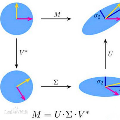Reconfigurable intelligent surfaces (RIS) have drawn considerable attention recently due to their controllable scattering elements that are able to direct electromagnetic waves into desirable directions. Although RISs share some similarities with relays, the two have fundamental differences impacting their performance. To harness the benefits of both relaying and RISs, a multi-user communication system is proposed in this paper wherein a relay and an RIS cooperate to improve performance in terms of energy efficiency. Using singular value decomposition (SVD), semidefinite programming (SDP), and function approximations, we propose different solutions for optimizing the beamforming matrices at the base-station (BS), the relay, and the phase shifts at the RIS to minimize the total transmit power subject to quality-of-service (QoS) constraints. The problem is solved in different cases when the relay operates in half-duplex and full-duplex modes and when the reflecting elements have continuous and discrete phase shifts. Simulation results are provided to compare the performance of the system with and without the RIS or the relay in both full-duplex and half-duplex modes, under different optimization solutions. Generally, the results show that the system with full-duplex relay and RIS cooperation outperforms all the other scenarios, and the contribution of full-duplex relay is higher than that of the RIS. However, an RIS performs better than a half-duplex relay when the required QoS is high. The results also show that increasing the number of RIS reflecting elements improves performance better in the presence of a relay than in its absence.
翻译:由于可控的分散元素能够将电磁波引向理想方向,重新配置的智能表面(RIS)最近引起了相当的关注。虽然RIS与中继系统有一些相似之处,但两者在性能方面有着根本性的差异。为了利用中继和RIS的好处,本文件提议了一个多用户通信系统,由中继和RIS合作提高能效方面的绩效。使用单值分解(SVD)、半确定性编程(SDP)和函数近似,我们提出了不同的解决方案,以优化基站(BS)、中继和里程的波变异矩阵,以最大限度地减少受服务质量限制的传输总功率。本文件提出了多用户通信系统,由中继和里程分解(RIS)在提高能效方面的绩效方面进行合作。使用单值分解(SVD)、半确定程序(SDP)和功能近似性近似,我们提出了不同的解决方案是将系统性能与全上和半确定性能矩阵的矩阵矩阵矩阵矩阵矩阵,同时展示整个中继率(SISISDRS)的绩效,在全面和整个中继模式下显示整个版本中转结果的改进。



